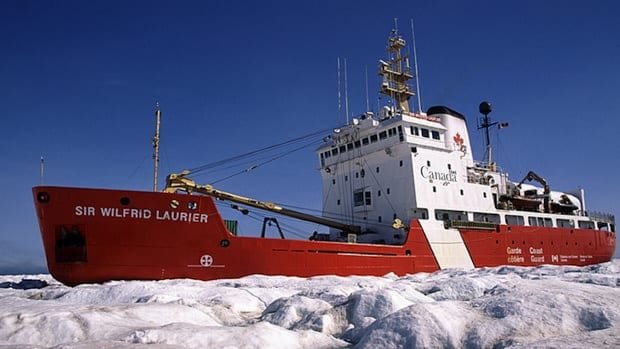The Canadian military, along with potentially the coast guard, is closely monitoring a Chinese research vessel as it makes a return to Arctic waters off Alaska for the second consecutive year. Data compiled by an independent researcher and ship tracker, Steffan Watkins, reveals that a Canadian air force CP-140 surveillance plane was observed in the vicinity of the Xue Long (Snow Dragon) 2 as it exited the Bering Strait on Sunday. The aircraft, as per Watkins’s investigation, was relocated to Anchorage, Alaska, from its base in Comox, B.C., on July 9. Since then, it has conducted four patrols, with the most recent involving the vessel, which is China’s inaugural domestically constructed polar research ship.
Although publicly available flight tracking displays the CP-140’s patrol route, the Department of National Defence declined to confirm the aircraft’s presence on Monday. However, a military statement released on Tuesday affirmed ongoing monitoring of the vessel Xue Long 2 by a CP-140 Aurora aircraft based out of Alaska. The military’s joint operations centre spokesperson, Maj. Alexander Naraine, stated that monitoring will persist as long as the vessel operates near Canadian territorial waters. Naraine highlighted that rival nations are actively exploring Arctic waters and the sea floor, conducting surveillance using dual-purpose research vessels and platforms to gather intelligence and probe Canadian infrastructure.
In a related development, the Canadian Coast Guard reported its monitoring activities regarding illegal fishing. The Chinese ice ship departed from Shanghai on July 6, passing near Japan before proceeding north into Russian waters. The CCGS Sir Wilfrid Laurier shadowed the Xue Long 2 from Japan, maintaining a parallel course in international waters until the vessels crossed into the Bering Strait between Alaska and Russia. Initially, the coast guard provided a vague response regarding the mission of the Sir Wilfrid Laurier, referring to a previous media release about conducting high seas patrols in the North Pacific to combat illegal fishing. However, the agency later denied shadowing the Xue Long 2, stating that the focus was on monitoring migratory routes for key species like Pacific salmon.
Despite the coast guard’s stated mission, analysis of ship-tracking data revealed that only a third of the recent voyage aligned with known salmon migration paths. The ship’s helicopter was scheduled to collaborate with Canadian fishery officers in Japan to oversee fishing vessels and ensure compliance with international laws. Prime Minister Mark Carney has pledged to enhance the Canadian Coast Guard’s reach, security mandate, and capabilities as part of the government’s plan to bolster national defenses. The government aims to integrate the civilian agency, presently under the Fisheries Department, into Canada’s NATO defense capabilities to enhance maritime surveillance and safeguard sovereignty.
Last summer, the Royal Canadian Navy dispatched a frigate to monitor the Xue Long 2 during its Arctic voyage, a mission initially acknowledged by the Department of National Defence after more than a week. Arctic expert Michael Byers from the University of British Columbia emphasized the necessity for Canadian officials to be more transparent about perceived security threats posed by the vessel. Byers raised concerns about the characterization of the Chinese ice research ship as a dual-use vessel, suggesting potential military or defense applications. While acknowledging the ship’s potential military relevance in data collection, Byers urged caution in making potentially escalatory statements about Chinese activities in the Arctic.
In conclusion, the monitoring activities of the military and coast guard have garnered support amidst rising concerns about China’s military expansion and its support for Russia. Byers emphasized the importance of vigilance when foreign government vessels are in proximity to the United States or Canada, underscoring the need for continued monitoring efforts.

